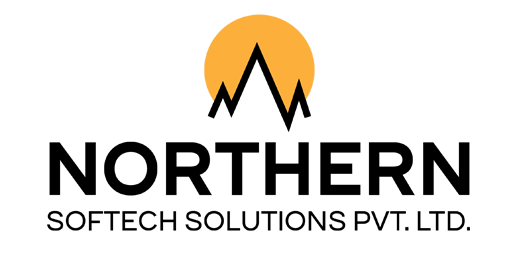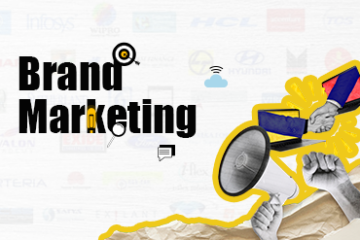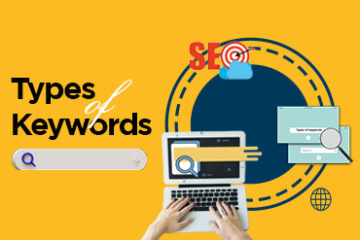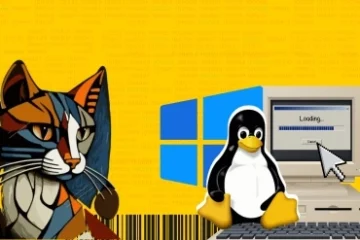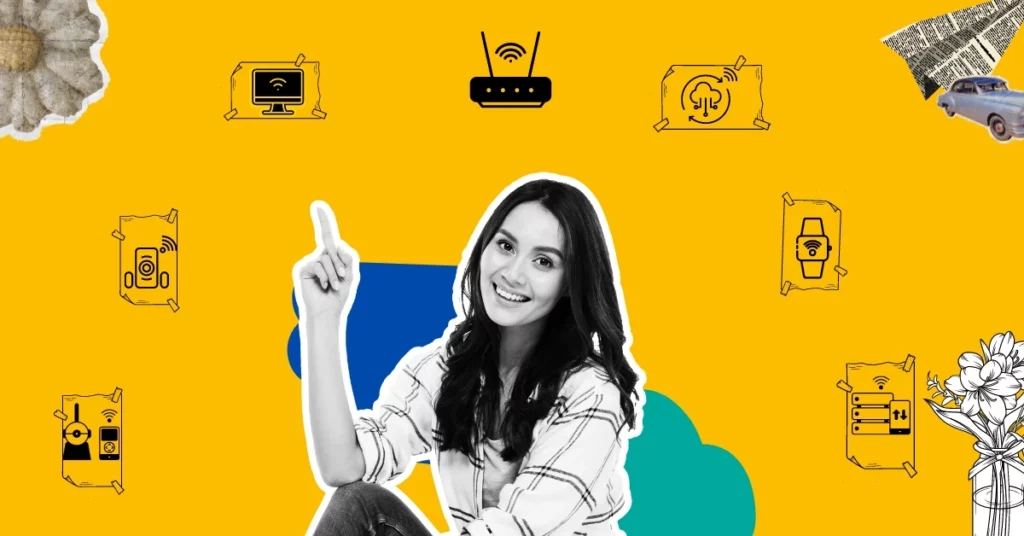
If you have landed on this page, then you must be looking for the difference between IoT and IIoT. However, before we discuss the difference, let’s learn about these terms. IoT connects people via smart devices, enhancing daily life with smooth connectivity. In contrast, IIoT, or Industrial Internet of Things, is all about making industries better and more efficient. It enhances factories and industries, making them smarter and more efficient by improving processes and automation, leading to increased productivity. The big difference between the two is what they’re used for.
This article simplifies the difference between IoT and IIoT by shedding light on their unique roles in our modernized world. It analyzes how various elements connect, showing their unique roles in our linked world, and contributing to widespread technology used in various aspects of our daily lives. IoT links devices, whereas IIoT improves industries, and Industry 4.0 combines both, creating smart factories with advanced automation and real-time data for efficient production.
Table of Contents
Let’s briefly discuss the difference between IIoT and IoT:
What Is IoT? (Internet of Things)
The Internet of Things (IoT) is a network of connected devices that communicate over the Internet. The main aim of IoT is to enhance efficiency, convenience, and decision-making by allowing these devices to collect and share information. IoT makes life simpler by allowing objects to communicate effortlessly, leading to a more connected and efficient world.
However, while this makes things super handy, it also brings up some important things to think about. With all this information sharing, there are concerns about privacy and security. As more and more things become connected, the way we live and do things is going to change a lot. So, IoT isn’t just about having cool gadgets, it’s about creating a future where everything works together seamlessly.
Its applications can be found in various domains, including wearables, smart homes, healthcare, industrial automation, agriculture, transportation, and more. IoT devices work together for better efficiency and control, making life easier. They improve convenience, and productivity, and save resources for a smoother experience.
Additionally, when artificial intelligence teams up with the Internet of Things, it boosts their abilities. AI helps IoT devices understand and make sense of the huge amounts of data they gather, making smart decisions and automating tasks. This teamwork between IoT and AI makes connected systems work even better.
IoT Across Industries: Real-World Applications
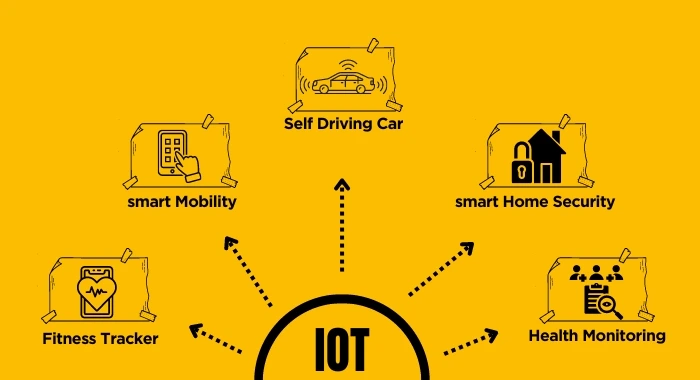
1. Smart Home
- Smart Thermostats, Smart lighting: Bulbs and fixtures you can control with a smartphone app.
- Smart Security Systems: Cameras, doorbell cameras, and sensors that provide remote monitoring and alert notifications.
2. Healthcare
- Remote Patient Monitoring: Wearable devices that track health metrics and send data to healthcare providers.
- Smart Pills: Smart Pills are pills with sensors that send signals to check if people are taking their medicine correctly.
- IoT-enabled Medical Equipment: Connected devices in hospitals that provide real-time data on patient conditions.
3. Industrial IoT (IIoT)
- Predictive Maintenance: Sensors on machinery that collect data to predict when maintenance is needed, reducing downtime.
- Smart Grids: Intelligent energy distribution systems that optimize energy consumption and reduce waste.
- Asset Tracking: Using RFID and GPS devices to track equipment and inventory location and status.
4. Agriculture
- Precision Farming: IoT sensors and drones for monitoring crop conditions, soil quality, and irrigation needs.
- Livestock Monitoring: Wearable animal devices that track health metrics and location.
- Smart Greenhouses: Sensors that control environmental conditions for optimal plant growth.
5. Transportation
- Connected Cars: Vehicles with IoT capabilities for real-time navigation, maintenance alerts, and traffic updates.
- Smart Traffic Management: Systems that use data from connected vehicles to optimize traffic flow.
- Fleet Management: IoT devices to monitor and manage a fleet of vehicles for efficiency and safety. It’s particularly important for businesses that rely heavily on transportation for their day-to-day operations, such as logistics, delivery services, and public transportation companies.
6. Smart Cities
- Public Safety: IoT devices such as smart cameras and sensors for crime detection and prevention.
- Waste Management: In Smart bins that signal when they need emptying, optimizing waste collection routes.
- Environmental Monitoring: Sensors to measure air quality, noise levels, and other environmental factors.
What is IIoT?
The Industrial Internet of Things (IIoT) functions as a digital nervous system for industries. It connects machines, devices, and sensors to gather and share data, helping businesses run smarter. IIoT is like a specialized version of IoT, designed specifically for industries and factories.
In simple terms, IIoT uses smart technology to make industries more efficient. For example, sensors on machines can monitor their health, predicting when they need maintenance before they break down. This prevents costly downtime. Moreover, it raises productivity by optimizing processes, reducing waste, and refining overall quality.
IIoT in Industry 4.0 links industrial processes using smart devices and sensors. These gadgets connect to the internet and share data about how machines are working and the production environment. This information is then sent to the cloud, where it’s analyzed. Businesses use this analysis to make smart decisions and enhance operational efficiency in the fourth industrial era. It’s like giving industries a digital brain that helps them work better by collecting and understanding data from their machines and processes.
IIoT isn’t just about technology, it’s about making our world work better, faster, and smarter. From manufacturing and energy to healthcare and agriculture, IIoT transforms how industries operate, making them more productive and sustainable. The key difference between IoT and IIoT lies in their applications. IIoT specifically focuses on the industrial sector, optimizing processes and enhancing efficiency, whereas IoT has a broader scope.
IIoT in Everyday Industry
1. Smart Manufacturing
- IIoT promotes smart manufacturing by utilizing connected sensors to gather data on production efficiency, quality, and equipment performance. This information optimizes processes, improves product quality, and minimizes waste in factories.
2. Asset Tracking and Management
- RFID (Radio-Frequency Identification) and GPS (Global Positioning System) technologies are used in IIoT to track the location and status of assets such as raw materials, finished goods, and equipment. This helps in refining supply chain logistics and improving overall efficiency.
3. Connected Supply Chain
- IIoT (Industrial Internet of Things) connects devices in industries. In a Connected Supply Chain, IIoT monitors and boosts efficiency by tracking products, managing inventory, and optimizing logistics. This helps businesses save time and resources in managing their supply chain processes.
4. Energy Management
- IIoT systems can monitor and control energy usage in industrial facilities. Smart sensors and devices can adjust lighting, heating, and cooling systems based on occupancy and environmental conditions, leading to energy savings and reduced operational costs.
5. Remote Monitoring and Control
- Industrial processes can be monitored and controlled remotely using IIoT technologies. This is particularly useful for industries with distributed operations, allowing for real-time adjustments, troubleshooting, and maintenance without the need for physical presence.
6. Health and Safety Monitoring
- IIoT sensors can be deployed to monitor workplace conditions and ensure the health and safety of workers. For example, wearable devices can track biometric data, and environmental sensors can detect hazardous conditions, helping to prevent accidents.
7. Quality Control and Assurance
- IIoT can be used to enhance quality control processes by providing real-time data on product quality. Sensors and cameras can detect defects and quirks during the manufacturing process, ensuring that only high-quality products reach the market.
8. Water and Waste Management
- IIoT can be applied to monitor and optimize water usage and waste management in industrial processes. Sensors can measure water quality, consumption, and waste production, enabling more sustainable and efficient practices.
These examples demonstrate how IIoT is transforming various industries by providing connectivity, data-driven insights, and automation to increase efficiency, reduce costs, and boost overall operational performance.
Difference Between IoT and IIoT
As we differentiate, IoT connects everyday things, whereas IIoT powers industries. Check out the table below to understand the difference between IoT and IIoT. It’s like comparing your smart home gadgets to the large-scale machinery in factories.
| IoT | IIoT |
| Connects everyday things like smart home devices and wearables to the internet for convenience. | Connects industrial machines and processes to boost efficiency in sectors like manufacturing and energy. |
| Makes daily life easier with remote control and smart features. | Improves how industries work by using data to make better decisions and keep machines running smoothly. |
| Handles a large volume of diverse data. | Manages massive data from industrial machines and processes. |
| It has a short product life cycle. | It has a very long life cycle. |
| Cares about reliability but less than IIoT. | Needs to be super reliable to avoid big problems in industries. |
| Needs security, especially for personal data. | Requires serious security to protect industries from cyber threats. |
| Utilizes various network types (Wi-Fi, cellular, LPWAN). | Often requires more robust and secure networks (e.g., private networks, VPNs) |
| Follows standard IoT protocols and standards. | May adhere to industry-specific standards and protocols. |
Pioneering The Future with IoT and IIoT
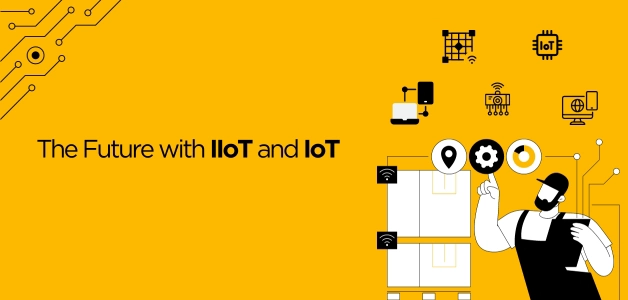
The future of the Internet of Things (IoT) and the Industrial Internet of Things (IIoT) looks promising, with several key trends shaping their development. First, the widespread adoption of 5G connectivity will enable faster and more reliable communication for IoT devices. Second, edge computing, where data is processed closer to the source, will reduce delays and increase overall system efficiency. The integration of artificial intelligence (AI) and machine learning (ML) into devices will allow for smarter decision-making without continuous dependence on the cloud.
Security will be a top priority, and companies are working hard to make sure their smart devices are safe from cyber threats. This includes using strong encryption, secure authentication, and better controls to keep your data and devices safe.
To make sure all different types of IoT devices can work together smoothly, there will be efforts to set common standards. This is like making sure all your smart devices speak the same language, so they can understand each other better.
Sustainability and energy efficiency are also important. This means companies will focus on making eco-friendly IoT devices and using environmentally friendly processes to make them.
Industries like manufacturing, healthcare, agriculture, and transportation will increasingly adopt IIoT solutions to maximize output and reduce costs. Human augmentation using IoT devices will become more prevalent, with applications in healthcare monitoring and augmented reality for training in various fields. Governments may introduce regulations to ensure responsible and ethical use of IoT technologies, particularly regarding privacy and data protection.
In the future, around 30.9 billion interconnected devices will reshape our daily lives and redefine how we work. The Industrial Internet of Things (IIoT) market is set to hit USD 1.1 trillion by 2028, indicating a major shift. This means industries will become more efficient and smarter, thanks to increased automation and better use of data. Overall, these developments promise a globally connected world, bringing innovation, improved productivity, and economic growth.
As technology gets better, smart devices like those in our homes or for health will become more personalized, fitting our individual needs. This means they will be designed just for us, making our experience better. But remember, these changes can happen because of new technology, what people want, and how society is changing. So, things might keep improving and changing in the future.
In The End
The difference between IoT and IIoT plays a vital role in shaping our digital future. While IoT enhances daily life with smart conveniences, IIoT revolutionizes industries by boosting efficiency. The key difference is their focus on IoT enriches personal experiences, while IIoT drives industrial progress.
IoT (Internet of Things) and IIoT (Industrial Internet of Things) both rely on strong connections, but IIoT, used in industries, puts additional focus on security for stability. By adopting advanced technologies like 5G, edge computing, AI, and ML, we’re bringing them together, creating a more efficient and connected world. More industries will start using IIoT, while everyday IoT devices will become more personalized for individual needs. To keep up with these changes, it’s essential to understand that IoT is for general use, while IIoT is specifically for industries, ensuring a connected and productive future.
FAQs
What are IIoT applications and examples?
IIoT applications in industries include predictive maintenance, asset tracking, remote monitoring, and energy management. They optimize processes, enhance quality control, and improve worker safety. Examples include real-time equipment monitoring, supply chain optimization, and environmental sensing.
What are the key differences between IoT and IIoT?
The main difference between IoT and IIoT lies in their applications and focus areas. IoT connects daily items for user convenience with a shorter product life, with a focus on diverse data and security. IIoT connects industrial machines for efficiency with a longer life, prioritizing reliability and strong security.
What are the benefits of IIoT?
IIoT connects machines in industries, boosting efficiency and safety. It helps predict when machines need fixing, reducing downtime. With real-time data, decisions become smarter, saving money. In a nutshell, IIoT makes industries work better, safer, and more cost-effective.
What are the risks and challenges of IIoT?
IIoT poses risks such as cybersecurity threats, data privacy concerns, and operational disruptions. Challenges include integration complexities, scalability hurdles, maintenance costs, and the need for a skilled workforce. Balancing connectivity benefits with these risks is crucial for successful IIoT implementation.
What are the differences between the Internet of Things (IoT) and Artificial Intelligence?
The Internet of Things (IoT) connects devices to share data, while Artificial Intelligence allows machines to learn and make decisions like humans. IoT focuses on connectivity, whereas AI amplifies machine intelligence for various tasks.
Can IoT work without AI?
Yes, IoT can work without AI. IoT devices can collect and transmit data without needing AI algorithms for processing. While AI can enhance IoT capabilities, and basic IoT functions like data collection and transmission can operate independently without AI integration.
What is the use of IoT in industries?
IoT in industries connects machines and devices to gather data for better decision-making. It helps monitor operations, predict maintenance needs, and manage resources efficiently, leading to increased productivity, safety, and cost savings.
